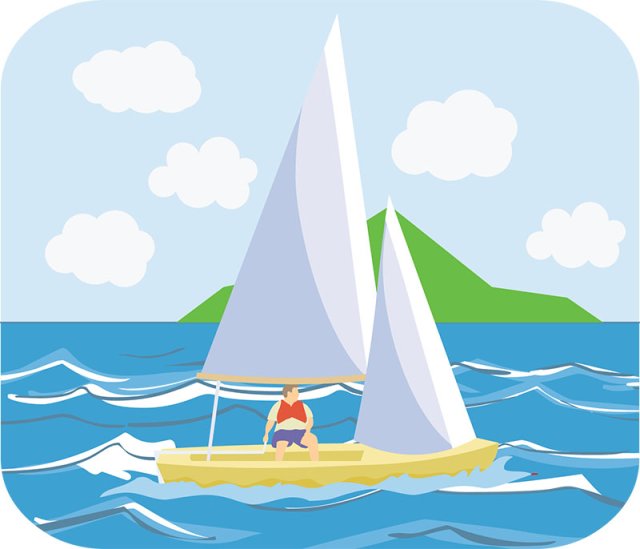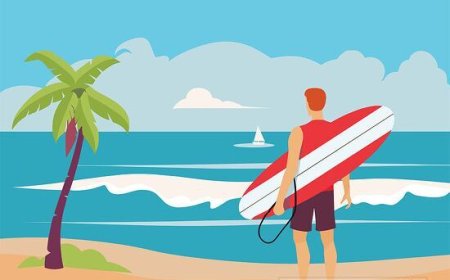Sailing: History, Techniques, Famous Sailors, and Fun Facts for Students
Explore sailing’s fascinating history, how boats harness wind power, and meet the sport’s champions. Discover why sailing inspires adventure

⛵ Sailing: Harnessing the Wind Across the Waves
🎯 Introduction
Sailing is the sport and art of moving boats across water using the power of the wind. Sailors must understand the weather, read the waves, and use clever techniques to steer their boats. From tiny dinghies to giant racing yachts, sailing offers endless adventure and challenge. This article will show you how sailing began, how it’s practiced, and why it’s such a thrilling activity.
🏛️ History of Sailing
Ancient Beginnings
- People have sailed for over 5,000 years.
- Ancient Egyptians used sails on the Nile River.
- The Polynesians navigated huge distances across the Pacific.
Modern Sailing
- Recreational sailing grew in the 1800s.
- The America’s Cup, the oldest international sporting trophy, began in 1851.
Olympic Sport
- Sailing joined the Olympics in 1900.
- Today, there are many sailing classes and events.
⛵ How Sailing Is Practiced
Equipment
- Sailboat or yacht.
- Sails: mainsail and jib.
- Rudder for steering.
- Life jacket and safety gear.
Basic Techniques
- Tacking: Turning the bow through the wind.
- Jibing: Turning the stern through the wind.
- Trimming: Adjusting sails for speed.
- Helming: Steering the boat.
Types of Sailing
- Dinghy Sailing: Small boats for racing and learning.
- Keelboat Sailing: Larger boats with heavy keels.
- Yacht Racing: Fast, high-tech boats.
- Cruising: Traveling longer distances for fun.
🧬 Classification and Scientific Background
Classification:
- Individual or Team Sport
- Water Sport
Biomechanics:
- Strength: Handling ropes and sails.
- Balance: Moving around the boat safely.
- Coordination: Steering and adjusting sails.
Exercise Science:
- Builds core and arm strength.
- Improves balance.
- Teaches endurance.
Psychology:
- Teaches decision-making.
- Builds focus.
- Encourages teamwork.
🏆 Major Competitions
- America’s Cup
- Volvo Ocean Race
- Olympic Sailing Events
- Sydney to Hobart Yacht Race
⭐ Famous Sailors
- Ellen MacArthur (UK): Fastest solo sail around the world.
- Ben Ainslie (UK): Most successful Olympic sailor.
- Jessica Watson (Australia): Youngest solo circumnavigator.
- Russell Coutts (NZ): America’s Cup champion.
💪 Benefits of Sailing
- Builds physical strength.
- Improves problem-solving.
- Teaches teamwork.
- Encourages respect for nature.
🏅 Famous Moments
- Ellen MacArthur’s world record in 2005.
- Ben Ainslie’s five Olympic medals.
- Jessica Watson circumnavigating the world at age 16.
🌟 Interesting Facts
- Sailing was part of the first modern Olympics in 1896, but no races happened due to bad weather.
- The America’s Cup started before the first modern Olympics.
- Some racing yachts cost over $100 million.
🧠 Kid-Friendly Summary
Sailing is a sport where you move boats using the wind. Sailors steer, adjust sails, and work as a team. Sailing began thousands of years ago and is now an Olympic sport. It helps you build strength and learn about the ocean.
✨ Key Takeaways
- Sailing is over 5,000 years old.
- It became an Olympic sport in 1900.
- Famous events include the America’s Cup.
- Sailors learn teamwork and problem-solving.
📖 Vocabulary Words
| Word | Definition |
|---|---|
| Mainsail | The biggest sail on the boat |
| Jib | Smaller front sail |
| Tacking | Turning the bow through the wind |
| Jibing | Turning the stern through the wind |
| Helm | The steering mechanism |
| Keel | Heavy fin under the boat |
| Trim | Adjusting sails for speed |
| Boom | Horizontal pole supporting the mainsail |





















































